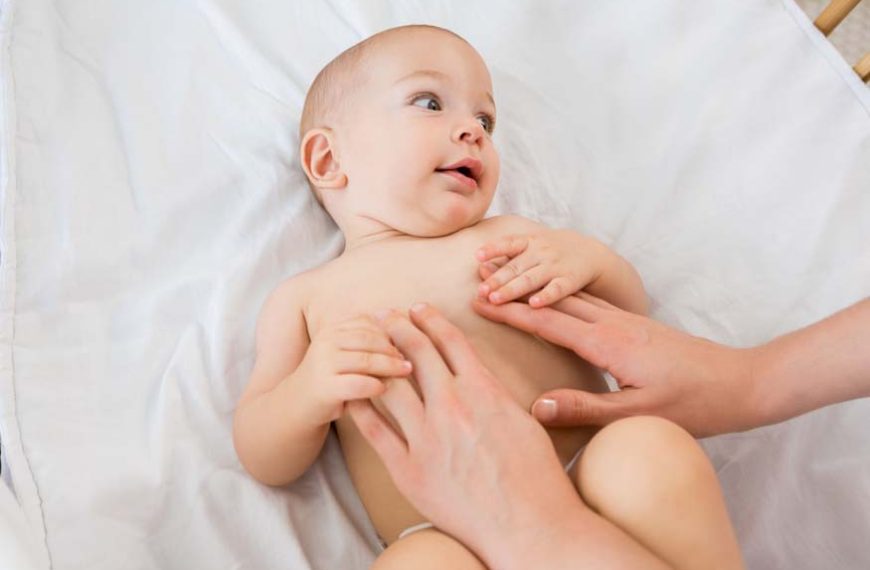Welcoming a new member to the family is an exhilarating experience, but it also brings along the responsibility of ensuring the baby’s health and well-being. There are a lot of things that one has to take into account, especially since taking care of a newborn is not simple.
One condition that parents may encounter is torticollis in babies. Torticollis refers to the tightening of neck muscles, causing the baby’s head to tilt to one side. In this blog, we will explore the causes, symptoms, and treatment options for infant torticollis, shedding light on how parents can recognise and address this condition to ensure their baby’s optimal development.
Understanding Torticollis in Babies
Torticollis is a condition characterised by the shortening or tightening of the muscles on one side of the neck, leading to the tilting or rotation of the baby’s head. This condition can manifest shortly after birth or become noticeable as the baby grows and becomes more active. There are two primary types of torticollis in babies:
- Congenital Torticollis:
- Acquired Torticollis:
Congenital torticollis is present at birth and is often caused by the baby’s positioning in the womb or due to trauma during delivery. The baby may have difficulty turning their head in one direction, and a lump or tight band of muscle may be felt in the neck.
Acquired torticollis develops after birth and is usually associated with a specific event or condition. This could include muscle spasms, neck injuries, or infections. Identifying the underlying cause is crucial for effective treatment.
Symptoms of Torticollis in Babies
Recognising the signs and symptoms of torticollis in babies is essential for early intervention and successful treatment. Common indicators include:
- Head Tilt:
- Limited Range of Motion:
- Lump in the Neck:
- Favoured Side:
- Flat Head Syndrome (Plagiocephaly):
The most noticeable sign of torticollis is a persistent tilt of the baby’s head to one side. This may become more apparent when the baby is lying down or attempting to turn their head.
Babies with torticollis may experience restricted movement in the neck, making it challenging for them to turn their head fully in both directions.
In cases of congenital torticollis, a palpable lump or tight band of muscle may be felt in the baby’s neck. This is often due to muscle fibrosis.
Babies with torticollis may prefer to look in one direction, leading to a preference for feeding or interacting on that side.
Prolonged tilting of the head can contribute to flat head syndrome, where the back of the baby’s head becomes flattened. This is an additional concern that may arise in cases of untreated torticollis.
Causes of Torticollis in Babies
Understanding the causes of torticollis in babies is crucial for both prevention and effective treatment. Some common factors contributing to this condition include:
- Positioning in the Womb:
- Difficult Birth or Trauma:
- Muscle Spasms or Tightening:
- Infections:
Congenital torticollis can result from the baby’s positioning in the womb, especially if the head is consistently tilted in one direction.
Difficult deliveries or trauma during childbirth can contribute to acquired torticollis. In some cases, the use of forceps or vacuum extraction may play a role.
Muscle spasms or tightness in the neck muscles can lead to torticollis. This can be caused by a variety of factors, including genetic predisposition, injury, or infection.
Infections affecting the neck muscles or lymph nodes can result in acquired torticollis. Timely treatment of infections is essential to prevent complications.
Treatment Options for Infant Torticollis
Early intervention is crucial for the successful treatment of infant torticollis. Healthcare professionals, including paediatricians and physiotherapists, play a vital role in developing a treatment plan tailored to the baby’s specific needs. Here are some common approaches to treating torticollis in babies:
- Neck Exercises:
- Tummy Time:
- Positioning Techniques:
- Stretching Exercises at Home:
- Orthotic Devices:
- Monitoring and Follow-Up:
Physiotherapy plays a central role in treating torticollis. Parents are often taught specific neck exercises to help stretch and strengthen the affected muscles. These exercises are designed to improve the baby’s range of motion gradually.
Encouraging tummy time is an effective way to prevent and treat torticollis. Placing the baby on their stomach helps strengthen neck and shoulder muscles, promoting overall muscle development.
Parents are advised on proper positioning techniques to help the baby learn to turn their head in both directions. This may involve adjusting the baby’s crib, changing table, and other play areas to encourage diverse movements.
Healthcare professionals often provide parents with stretching exercises to be done at home between physiotherapy sessions. Consistent practice is essential for optimal results.
In severe cases, orthotic devices such as head positioning pillows may be recommended to help address the flattening of the baby’s head associated with torticollis.
Regular monitoring and follow-up appointments with healthcare professionals are essential to track the baby’s progress and make any necessary adjustments to the treatment plan.
In conclusion, torticollis in babies is a condition that requires early recognition and intervention for successful treatment. Parents play a crucial role in observing and communicating any concerns about their baby’s head positioning and movement to healthcare professionals. Timely physiotherapy, neck exercises, and consistent home care contribute to the effective management of torticollis, ensuring the baby’s optimal development.
We hope that you understand how Torticollis works and how there are ways to ensure that it can be avoided. If you are careful and ensure proper medical check-ups in the early stages, it is always better.
At EuroKids, we understand the importance of holistic development in the early years of a child’s life. Our caring and expert educators are trained to recognise and address developmental concerns, including conditions like infant torticollis, its effects and any other condition that may be affecting the growth of a child. Choose EuroKids for a nurturing environment where your child’s unique needs are recognised and supported from the very beginning. This will lead to a happier and more mature child in your family, ready to deal with everyday life.
















